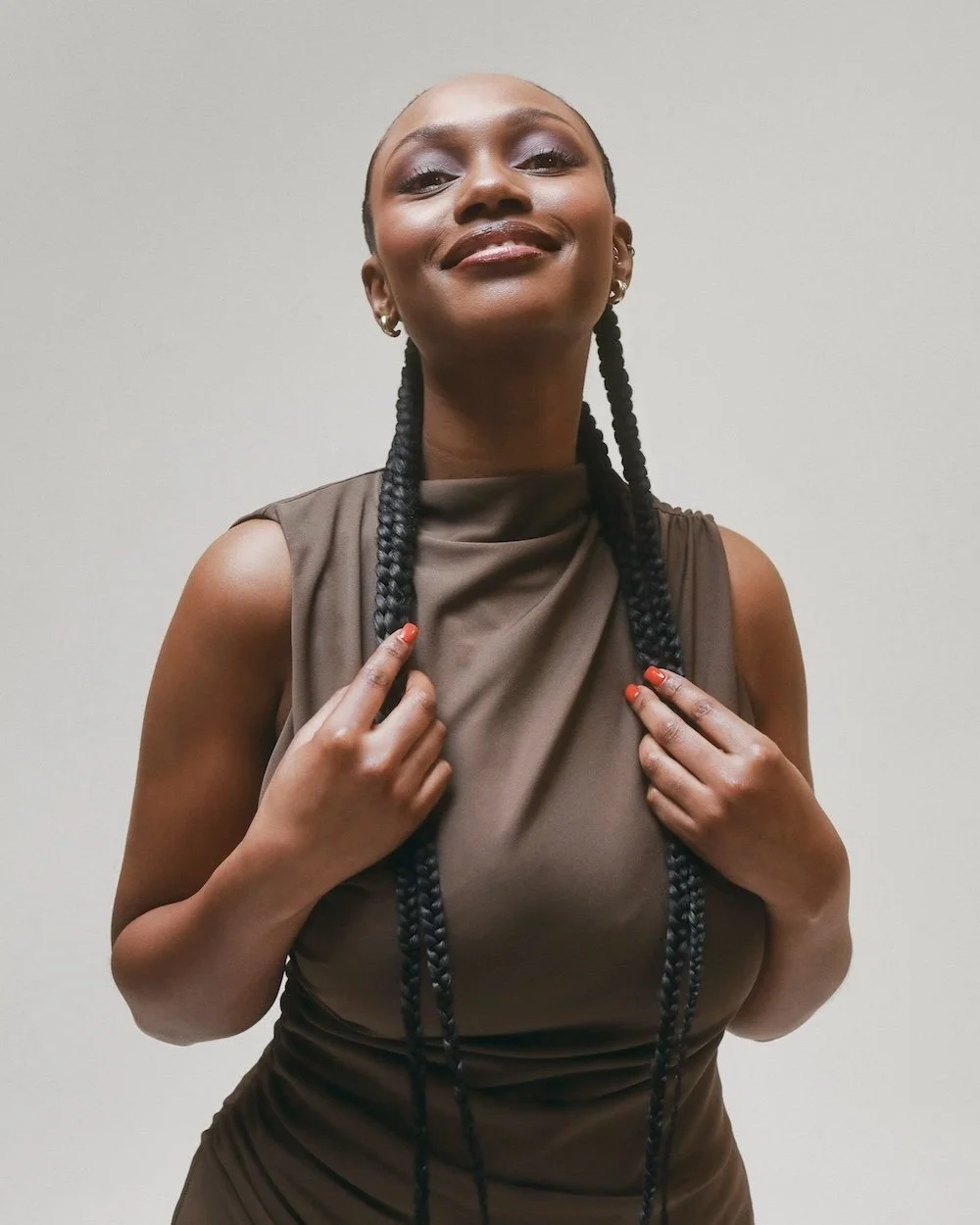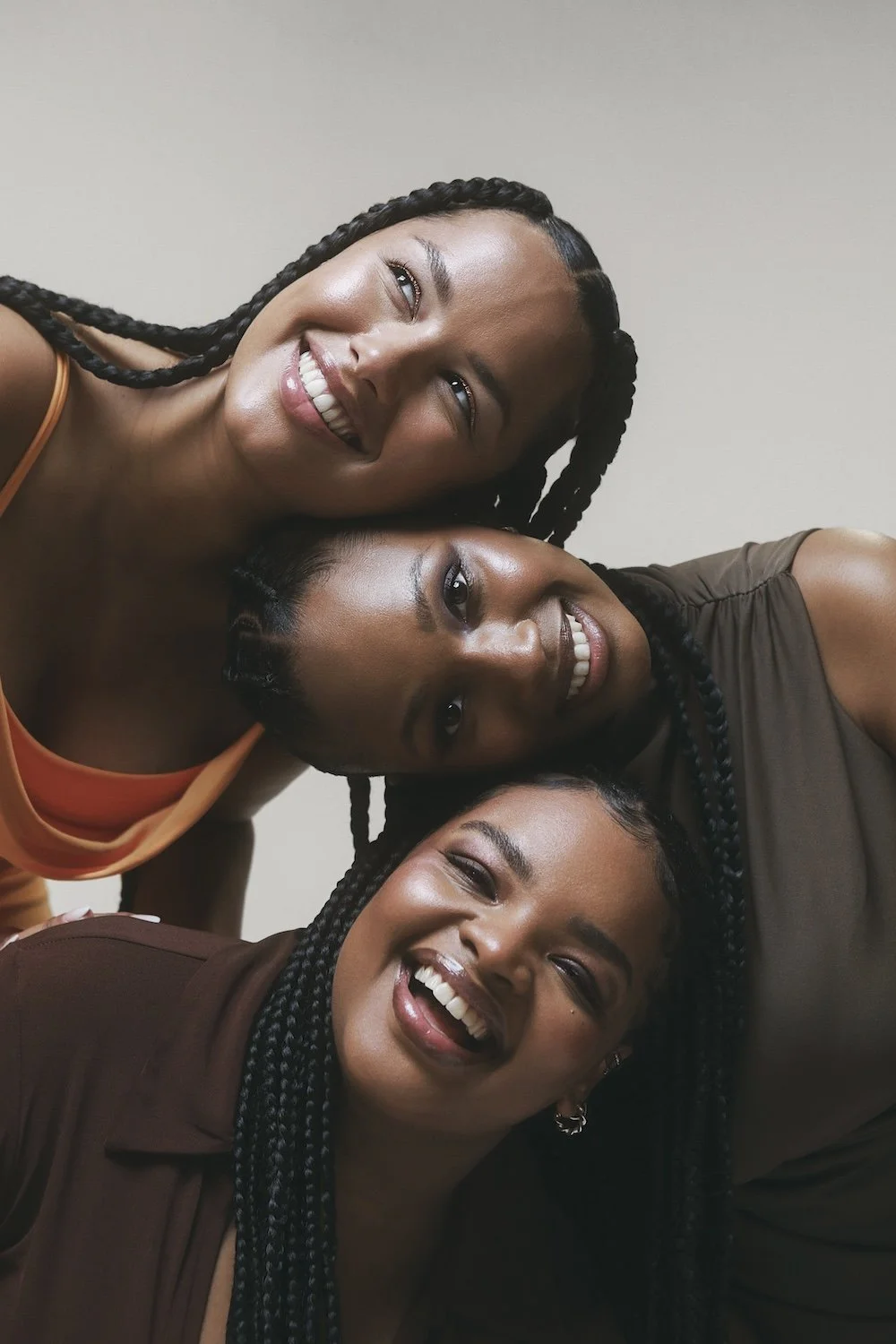For generations, Black women have navigated a fraught relationship with hair styling products. Relaxers and perms—once a rite of passage for many including myself—were the standard for getting that smooth, straight look. I got my hair permed in a basement in Philly at age 12. So did my mother and her mother. Unbeknownst to us, we were exposing ourselves to a host of chemicals, some of which have now been linked to serious health risks.
A recent study confirmed that chemical hair relaxers are associated with an increased risk of uterine cancer. These products, aggressively marketed to Black women, are loosely regulated and often contain endocrine disruptors—chemicals that interfere with hormonal function. Prior research has connected them to a range of reproductive health issues.
Now, attention is shifting from relaxers to another staple of Black hair care: braiding hair. Synthetic extensions are coming under scrutiny for their own potential hazards. Some of the most widely used brands contain carcinogens, lead, and volatile organic compounds (VOCs), substances known to cause skin irritation and possibly more severe long-term health effects.
Fortunately, entrepreneurs are stepping up to protect Black women by offering safer alternatives. We spoke with Cosima Richardson, founder of Kynd Hair, about her journey to creating a brand committed to eliminating synthetic braiding hair for good. Kynd—a Black-owned, woman-owned company—offers clean, non-toxic, itch-free braiding hair made from plant-based materials. The brand is set to launch in Europe soon (join the waitlist) and has plans to expand to the U.S. and beyond. In our conversation, Richardson shared her vision for a healthier, more sustainable future for Black hair care—one where beauty doesn’t come at the cost of well-being.
“With Kynd, I’ve created a product that’s plant-based, that’s non-toxic, it’s skin-friendly, and it’s also biodegradable.”
Attia Taylor: Can you tell me more about you and what got you into hair?
Cosima Richardson: I've been using synthetic hair since I was five years old, like many Black women. Growing up in Germany is probably different than growing up in the US, because there are a lot fewer Black people here. I was one of the only Black children in my kindergarten, and in some ways, I always felt different because of that. That's why I think I have such a vivid memory of getting braids for the first time. My parents divorced when I was little and then I grew up with my mom, who's white, and she had no idea how to deal with my hair. She did her best. So, when I got braids for the first time, it was like this revelation, in a sense, because no one had to deal with my hair anymore for weeks.
I experimented with extensions my whole life—tried everything. I relaxed my hair for a very long time. I was also wearing protective styles and that led me to experiment even more. Four years ago, I started looking into what the hair [I was using] is actually made of.
It was crazy because I think we all knew—or know—that this stuff is made from plastic, but we never really looked into it further. When I did, I was like, "Okay, why are there no alternatives?" There were a few startups out there who had just started researching, but they weren't really available in Europe. So, I thought, "Why don't I just try to create a product that's better?"
Amazing. It’s so needed and so necessary. You mentioned starting off in Europe. Will Kynd eventually be global?
We're going to start in Europe initially, just for the first launch, to see how everything goes and optimize, get feedback. But then I'm hoping that we can go to the US as soon as possible.
Kynd is meant to be a healthy and environmentally friendly alternative to most of the hair out there right now. What will make it natural and better for you?
So, let's start with what the plastic hair is made of. Regular braiding hair is normally made from Kanekalon, a synthetic fiber developed by Kaneka Corporation, a Japanese company. They’ve developed this fiber, and they distribute it to different manufacturers. What's actually behind this fiber is normally so-called modacrylic, which is made from polyacrylonitrile and vinyl chloride. So, it's basically made from toxic, carcinogenic chemicals, which—and I always think that's important to say—when you polymerize these two materials, a new material is created, which inherently is not toxic anymore. However, no one really knows what happens when you wear it, because when you wear it, it starts to decompose. You go out in the sun, so the hair is exposed to UV rays, you sweat, you sleep on it.
What I wanted to do is create a fiber that's made from a renewable material source that doesn't contain any toxic or harmful, irritating chemicals that also doesn't harm the planet once you're done wearing it. These fossil-based materials, especially modacrylic, are not being recycled, so you basically throw them away. They end up in the environment, where they're burned, and they release toxic fumes. With Kynd, I've created a product that's plant-based, that's non-toxic, it's skin-friendly, and it's also biodegradable.
I saw that you can actually put it in the washing machine.
Yeah, honestly, I'm not sure how many people are going to do that, because I think most people, myself included, don't have time to unbraid up from the bottom. I think most people will just cut their braids out. But I think it's nice to have the option to reuse it.
That's cost-effective. We live in a capitalistic world filled with overconsumption. Many people just go for what’s cheap and easy to get. What are the costs associated with making something like this? What would make your customers want to purchase hair at a higher price?
Firstly, using higher quality and more sustainable ingredients of course implies higher costs but there is something else that people tend to overlook: When you create a new product you won't be able to immediately produce 100 tons. You're going to start with a super small amount of product, because you need to build demand. That automatically means that, in the beginning, these products are more expensive. There are a few amazing brands in the US like Rebundle that offer alternatives in the range of $30-$40. While this is more costly than regular synthetic hair, it's important to understand that prices decrease as demand increases. The more you produce, the more affordable it gets. My goal is ultimately to make this affordable to as many people as possible. For Kynd Hair, I cannot name a price yet, because we're still in the final stages of development. But I will say it's going to cost at least three times more than regular synthetic hair. So that would be around $20.
There's a movement towards wanting to be healthy, wanting to consume and wear things that aren't going to be terrible for your body and the planet. Hopefully that catches on, and people are willing to shell out a little bit at the beginning. Are you planning to get Kynd Hair into stores?
Ultimately my goal is to replace as much plastic synthetic hair as possible, and I think that's going to be hard to do without getting it in stores. Here in Germany, it's not really that surprising, because it's such a niche. But in the US, for example, why is this not sold in Sephora? It's crazy. There’s such a huge percentage of the population using these products. That's also part of my mission, to bring this into retail and make it a staple that is accessible for as many people as possible.
Yeah, I think a lot of people will be excited about this because, honestly, I don’t want to wear things in my hair that could make me or the planet sicker.
It’s called Kynd because it’s kind to you and kind to the planet.







